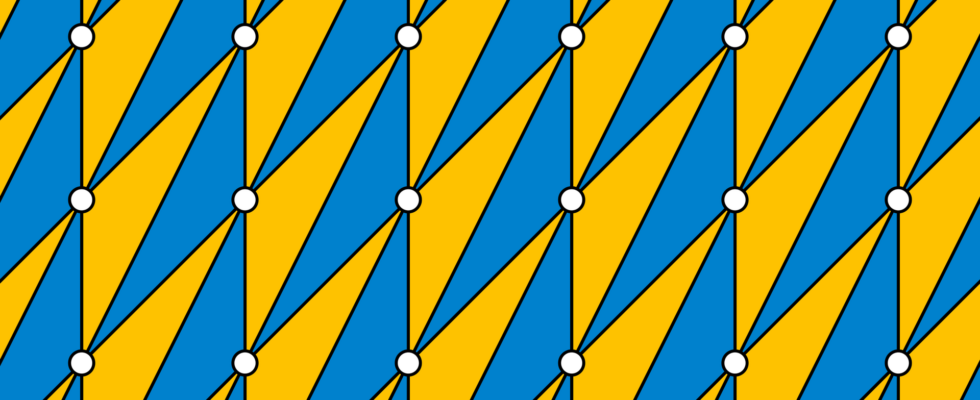It has thus been shown that the composition of two polygons that obey Pick’s theorem automatically also satisfies the theorem. It can be proved in a similar way: If you connect two polygons P1 and P2 to a bigger one Pwhere this and one of the smaller ones (P1) satisfy Pick’s theorem, then so does the rest P2. Knowing this, one can now prove that the theorem is valid for all triangles that satisfy the requirements.
Set of pick for two right triangles
Step 3: Triangles satisfy Pick’s theorem
To do this, you start with a right-angled triangle whose legs are aligned horizontally and vertically. Now you can reflect this at its hypotenuse and get a rectangle that satisfies Pick’s theorem as already shown: A = I + B/2 − 1. Again one can use that I = 2I’ + J − 2, where I’ are the interior points of the triangles. In addition: B = 2(B’ − J + 1), where B’ are the edge points of the triangles. Inserted into the area one gets: A = 2I’ + J − 2+ B’ − J + 1 − 1 = 2(I’ + B’/2 − 1). There A twice the area of a triangle A’ corresponds, one can see that both triangles obey Pick’s theorem.
Now one only has to show that other triangles also follow the theorem. This is easy to do: To do this, you draw the smallest possible rectangle around a certain triangle. Since all right triangles obey Pick’s theorem and all rectangles as well, one can use the composition rule to show that the triangle under consideration also obeys the theorem (since it holds for all other figures inside the rectangle).
Set of pick for arbitrary triangles
Step 4: From Triangles to General Polygons
You’re done with that, because connected polygons that don’t intersect can always be divided into triangles. And because these all satisfy Pick’s theorem, so does the overall construction. This is a wonderful method at hand to calculate the area of complicated polygons in no time at all.
But mostly one finds oneself confronted with measuring more complex figures. For such, Pick’s theorem can also be helpful – because many can be at least approximated by polygons. In addition, numerous scientists have now worked out extensions of the useful theorem, for example to take figures with holes or objects in higher spatial dimensions into account. As it turns out, geometry is sometimes easier than you think.
What is your favorite math theorem? Feel free to write it in the comments – and maybe it will soon be the topic of this column!
